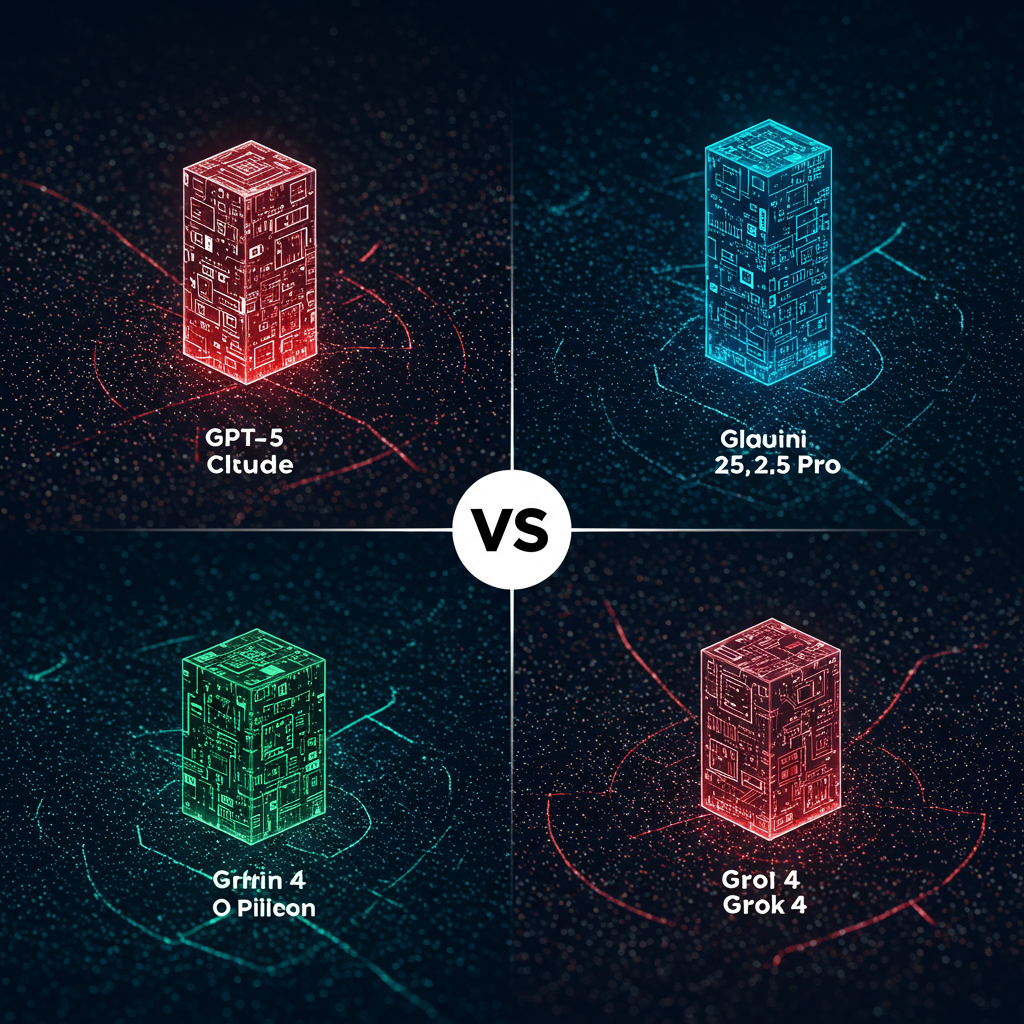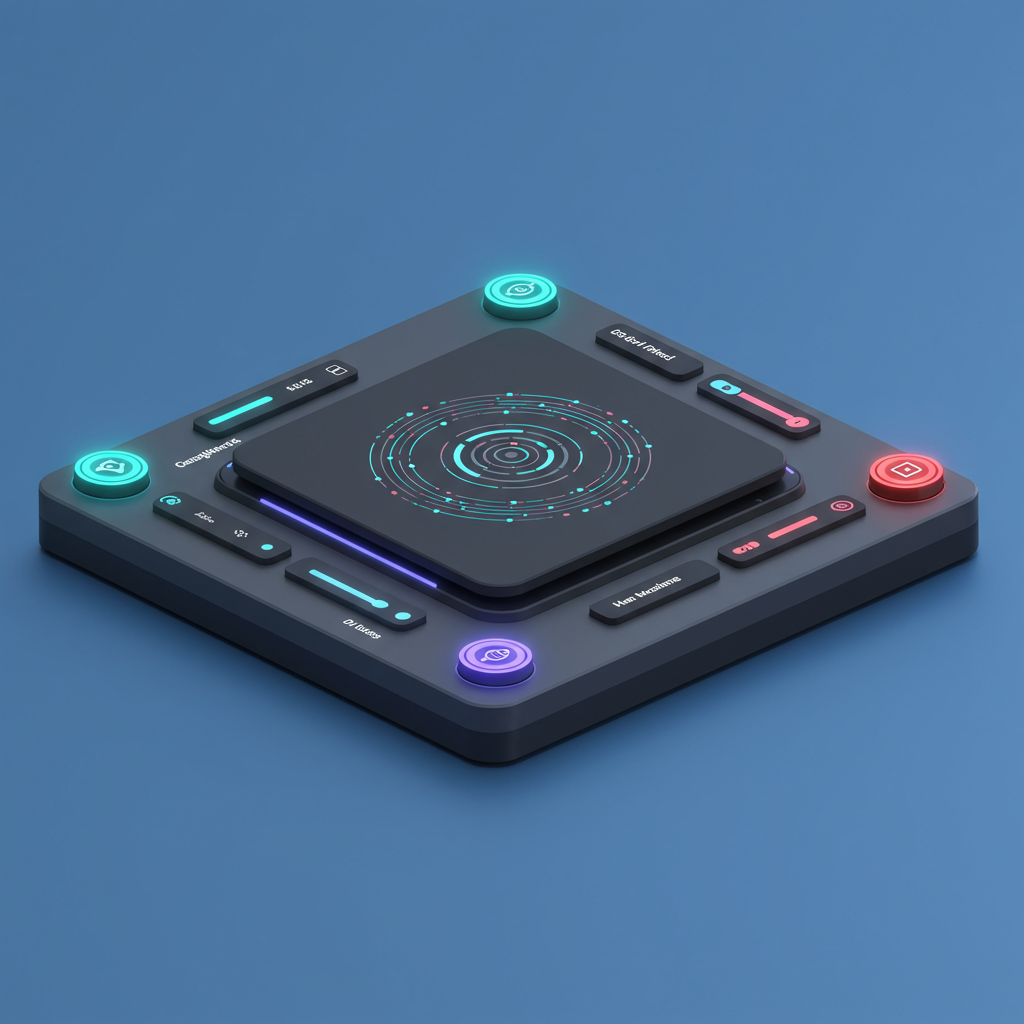The landscape of artificial intelligence is evolving at a breathtaking pace, with new, more powerful models emerging that promise to redefine how we interact with technology. As AI capabilities expand, a critical question arises for users and developers alike: which leading AI model truly stands out? This comprehensive guide dives deep into the capabilities of GPT-5, Claude 4, Gemini 2.5 Pro, and Grok 4, analyzing their strengths, weaknesses, and ideal use cases to help you decipher which AI reigns supreme in 2025. Understanding these differences is key to leveraging the power of advanced AI effectively.
The Dawn of a New AI Era: OpenAI’s GPT-5 Emerges
OpenAI solidified its position as an AI pioneer with the launch of GPT-5 on August 7, 2025. This flagship model represents a significant leap forward, designed to function more as an intelligent agent than a traditional chatbot. GPT-5 is OpenAI’s first “unified” AI model. It skillfully combines sophisticated reasoning with rapid response times, making interactions simpler and more effective. A real-time router autonomously determines the optimal response strategy, whether a quick answer or a more deliberate, thought-out reply.
Unlike its predecessor, GPT-4, which excelled at smart responses, GPT-5 expands ChatGPT’s functionality dramatically. It can generate software applications, manage user calendars, and create detailed research briefs. OpenAI CEO Sam Altman hailed GPT-5 as “the best model in the world.” He called its release a “significant step” toward Artificial General Intelligence (AGI). This advanced AI is now the default model for all free ChatGPT users, a strategic move to broaden access to cutting-edge AI reasoning. This commitment aligns with OpenAI’s mission to widely distribute the benefits of advanced AI.
GPT-5: Performance and Precision
In benchmark evaluations, GPT-5 demonstrates state-of-the-art performance in several key areas. Notably, it shows frontier-level capabilities in coding. On the demanding SWE-bench Verified test for real-world coding, GPT-5 achieved an impressive 74.9% on its first attempt. This score slightly surpasses Anthropic’s Claude Opus 4.1 (74.5%) and significantly outperforms Google DeepMind’s Gemini 2.5 Pro (59.6%). For PhD-level scientific questions (GPQA Diamond), GPT-5 Pro scored 89.4%. This performance edges out Claude Opus 4.1 (80.9%) and Grok 4 Heavy (88.9%).
A critical improvement in GPT-5 is its drastic reduction in hallucinations. On the HealthBench Hard Hallucinations test, GPT-5 (with thinking mode) showed a mere 1.6% hallucination rate. This is a substantial improvement over GPT-4o (12.9%) and o3 (15.8%). Its overall hallucination rate for general ChatGPT prompts is just 4.8%. Beyond factual accuracy, OpenAI also claims GPT-5 excels in subjective domains like creative design and writing. VP of ChatGPT, Nick Turley, noted its “better taste” and “good vibes.” In terms of safety, GPT-5 is less prone to deceptive behavior and better distinguishes between malicious and legitimate requests, enhancing user trust.
Grok 4: xAI’s Disruptive Contender
Launched on July 9th, 2025, xAI’s Grok 4 represents a significant technical achievement in the frontier AI space. It boasts leading performance across numerous benchmarks, often attributed to a rumored 2.4 trillion parameters and a reported 10X increase in reinforcement learning compute compared to Grok 3. Grok 4 has dethroned Gemini 2.5 Pro in long context processing and holds a top spot on ArtificialAnalysis’ overall ranking. On “Humanity’s Last Exam,” Grok 4 Heavy scored 44.4%, slightly outperforming GPT-5 Pro’s 42%.
Despite its impressive benchmark scores, Grok 4 faces challenges in real-world utility and market differentiation. Early “vibe tests” and crowdsourced leaderboards placed Grok 4 in the “middle of the pack.” Many users found it less pleasant to use than models like Claude 3.5 Sonnet or GPT 4.5. Grok 4’s distinguishing feature is its search-heavy approach, reminiscent of OpenAI’s o3. While its reasoning with tools is transparent, often defaulting to search even for simple queries, some users find this “benchmaxxed” behavior cumbersome.
Grok 4: Surprising Strengths and Notable Weaknesses
In real-world tests, Grok 4 demonstrated strong performance in web searches and deep research. When presented with complex queries, it delivered comprehensive, well-formatted, and accurate results, sometimes adding unprompted but useful information. This strength also extended to chess, where Grok 4 showed the strongest performance among LLMs in a Kaggle tournament. It notably identified and capitalized on undefended pieces, a distinction from other AIs. Elon Musk commented that this chess prowess was an unexpected “side effect” of its general intelligence, not specific programming.
However, Grok 4 also exhibited significant weaknesses. Its image generation capabilities lagged behind competitors, frequently failing to adhere to prompts and struggling with details. More critically, its high price point ($300/month for SuperGrok Heavy) compared to competitors like ChatGPT ($20/month) raises questions about market share. Furthermore, concerns about “cultural risk” and perceived untrustworthiness, despite achieving SOC 2 compliance, suggest that benchmark scores alone won’t guarantee enterprise adoption.
Google Gemini 2.5 Pro: The Ecosystem Innovator
Google’s Gemini 2.5 Pro is a central player in the AI ecosystem, deeply integrated into Google’s suite of services. The free version offers access to Gemini 2.5 Flash and limited Pro, alongside image generation with Imagen 4, Deep Research, and custom GPTs (Gems). Higher-tier plans provide enhanced limits, access to advanced video editing tools like Veo 3, and Gemini integration within Google Docs and Gmail, positioning it as a robust tool for users embedded in the Google ecosystem.
In performance comparisons, Gemini 2.5 Pro presents a mixed bag. While its Imagen 4 generated good images, it sometimes struggled to follow prompts as closely as ChatGPT’s GPT-4o. In deep research and fact-checking tests, Gemini was inconsistent, sometimes making significant factual errors. Its web search capabilities were comprehensive but less “glanceable” than competitors and occasionally missed key details. In voice mode, Gemini was more robotic compared to ChatGPT but still natural, while its shopping advice tended to be general rather than providing direct links to deals.
Gemini’s Chess Performance and Overall Standing
In the Kaggle Game Arena chess tournament, Gemini 2.5 Pro secured a convincing 4-0 sweep against Claude 4 Opus. However, analysis suggested its victory might be attributed more to Claude’s poor play than Gemini’s exceptional skill, with Gemini still making odd moves despite overwhelming material advantage. Overall, in a comprehensive 2025 comparison, Gemini often placed last due to issues like providing false information and exhibiting weaker research capabilities, even in web searches—an ironic outcome for a Google product. This highlights the ongoing “hallucination problem” across all AI models, emphasizing the need for user vigilance.
Claude 4: Anthropic’s Refined Offering
Anthropic’s Claude 4, particularly its Opus 4.1 variant, consistently positions itself as a strong contender in the frontier AI landscape. While less information on its broader capabilities and pricing tiers was available in the provided summaries compared to GPT-5 or Grok 4, its benchmark performances highlight its technical prowess.
Claude Opus 4.1 achieved a competitive 74.5% on the SWE-bench Verified coding test, nearly matching GPT-5’s leading score. In PhD-level scientific questions (GPQA Diamond), it scored 80.9%, trailing GPT-5 Pro and Grok 4 Heavy but still demonstrating robust reasoning. On agentic ability in simulated online retail tasks (Tau-bench), Claude Opus 4.1 scored 82.4%, slightly outperforming GPT-5. This suggests strength in complex, multi-step online interactions. Despite its technical capabilities, Claude 4 Opus struggled in the AI chess exhibition, losing 0-4 to Gemini 2.5 Pro, indicating potential weaknesses in dynamic, strategic environments compared to more specialized LLMs like Grok 4. However, user feedback suggests that models like Claude 3.5 Sonnet offer a more pleasant user experience compared to Grok 4 in “vibe tests.”
Direct Comparison: Who Excels Where?
Choosing the “winner” among these advanced AI models depends heavily on your specific needs and priorities. No single model is universally superior across all use cases.
Coding and Technical Proficiency: GPT-5 appears to hold a slight edge in generating software and handling complex coding tasks, closely followed by Claude Opus 4.1. Gemini 2.5 Pro lags significantly in this area.
Deep Research and Web Search: Both GPT-5 and Grok 4 demonstrate strong, comprehensive capabilities in web searches and deep fact-checking. However, all models, including these, have shown instances of being “confidently wrong” or missing subtle errors. Gemini 2.5 Pro has shown more pronounced issues with factual inaccuracies in research.
Image Generation: ChatGPT (GPT-4o/5) is highlighted as producing the best images, closely adhering to prompts. Gemini’s Imagen 4 is a decent second, while Grok 4 lags considerably.
Voice Interaction and User Experience: ChatGPT’s Advanced Voice Mode is praised for its human-like inflections and conversational flow. Gemini and Grok offer more robotic voices, though Grok provides useful real-time transcription. User “vibe tests” suggest a preference for GPT models and Claude 3.5 Sonnet over Grok 4.
Agentic Capabilities and Task Automation: GPT-5 is specifically designed for agent-like functionality, excelling in tasks like calendar management and application generation. While its benchmark results in simulated online tasks were mixed, this is a core focus for OpenAI.
Handling Hallucinations and Safety: GPT-5 shows remarkable improvements in reducing hallucinations, particularly in “thinking mode,” and demonstrates enhanced safety in distinguishing malicious requests. This focus on accuracy and safety is a significant differentiator.
Strategic Problem-Solving (e.g., Chess): Grok 4 surprisingly stands out for its strong performance in chess, indicating a robust general intelligence. OpenAI’s models (o3, o4-mini) also performed well in the chess arena.
Choosing Your Champion: Key Considerations
When deciding which AI model is best for you, consider these factors:
Your Primary Use Case: Are you a developer needing coding assistance (GPT-5, Claude)? A researcher demanding accurate information (GPT-5, Grok 4, but verify)? A creative seeking image generation (GPT-5)? Or someone looking for a general-purpose conversational assistant (GPT-5, Gemini)?
Budget: Free access to GPT-5 is a game-changer. Paid tiers vary significantly, from ChatGPT’s $20/month Plus to Grok’s $300/month SuperGrok Heavy. Evaluate if the increased performance of premium tiers justifies the cost for your specific needs.
Ecosystem Integration: If you’re heavily invested in Google services, Gemini offers seamless integration. If you prefer a standalone, advanced agent, GPT-5 might be more appealing.
Tolerance for Risk and Accuracy: While all models can “hallucinate,” GPT-5 has made significant strides in reducing this. Always cross-verify critical information from any AI model.
Brand and Trust: Concerns around “cultural risk” and perceived trustworthiness, as noted for Grok, might influence enterprise or sensitive personal use cases.
The competition among these frontier AI models is fierce, pushing the boundaries of what’s possible. While benchmarks offer valuable insights, the true test lies in real-world application and how each model aligns with individual user needs.
Frequently Asked Questions
What are the key performance differences between these AI models in 2025?
In 2025, GPT-5 excels in coding (74.9% on SWE-bench) and PhD-level science (89.4% on GPQA), significantly reducing hallucinations (4.8% general rate). Grok 4 is strong in deep research and surprisingly adept at strategic games like chess, also leading on “Humanity’s Last Exam” (44.4%). Gemini 2.5 Pro integrates well within the Google ecosystem but shows mixed results in accuracy for deep research and image generation. Claude 4.1 is a close contender in coding and strong in agentic retail tasks.
Which AI model is now available for free to general users?
OpenAI’s GPT-5 is now the default model for all free ChatGPT users, marking a significant move by the company to broaden access to its advanced AI reasoning capabilities without a paywall. This makes high-tier AI more accessible than ever before. Grok also offers a free version (Grok 3), while Gemini provides free access to Gemini 2.5 Flash and limited 2.5 Pro.
For professional coding tasks, which AI model demonstrates the highest performance?
For professional coding tasks, OpenAI’s GPT-5 currently demonstrates the highest performance. It achieved an impressive 74.9% on the SWE-bench Verified test for real-world coding, slightly edging out Anthropic’s Claude Opus 4.1 (74.5%). Google DeepMind’s Gemini 2.5 Pro trailed behind with a score of 59.6% on the same benchmark, making GPT-5 the leading choice for developers.
Conclusion
The 2025 AI landscape is dynamic and intensely competitive, with GPT-5, Claude 4, Gemini 2.5 Pro, and Grok 4 pushing the boundaries of what’s possible. While GPT-5 often emerges as a frontrunner due to its advanced agentic capabilities, significant hallucination reduction, and strong performance in coding and complex reasoning, it’s clear that no single model offers a complete, undisputed victory. Grok 4 impresses with its raw benchmark power and unique search-heavy approach, though its market position and user experience are still evolving. Gemini 2.5 Pro offers seamless integration into the Google ecosystem, but its consistency in accuracy can be a concern. Claude 4 remains a powerful, reliable option, especially for coding-related tasks.
Ultimately, the “best” AI model depends on your specific requirements. Users are encouraged to experiment with different models, evaluate their performance against real-world tasks, and remain critically aware of their limitations, especially regarding accuracy. As AI continues its rapid evolution, staying informed and adaptable will be key to harnessing its transformative potential.




